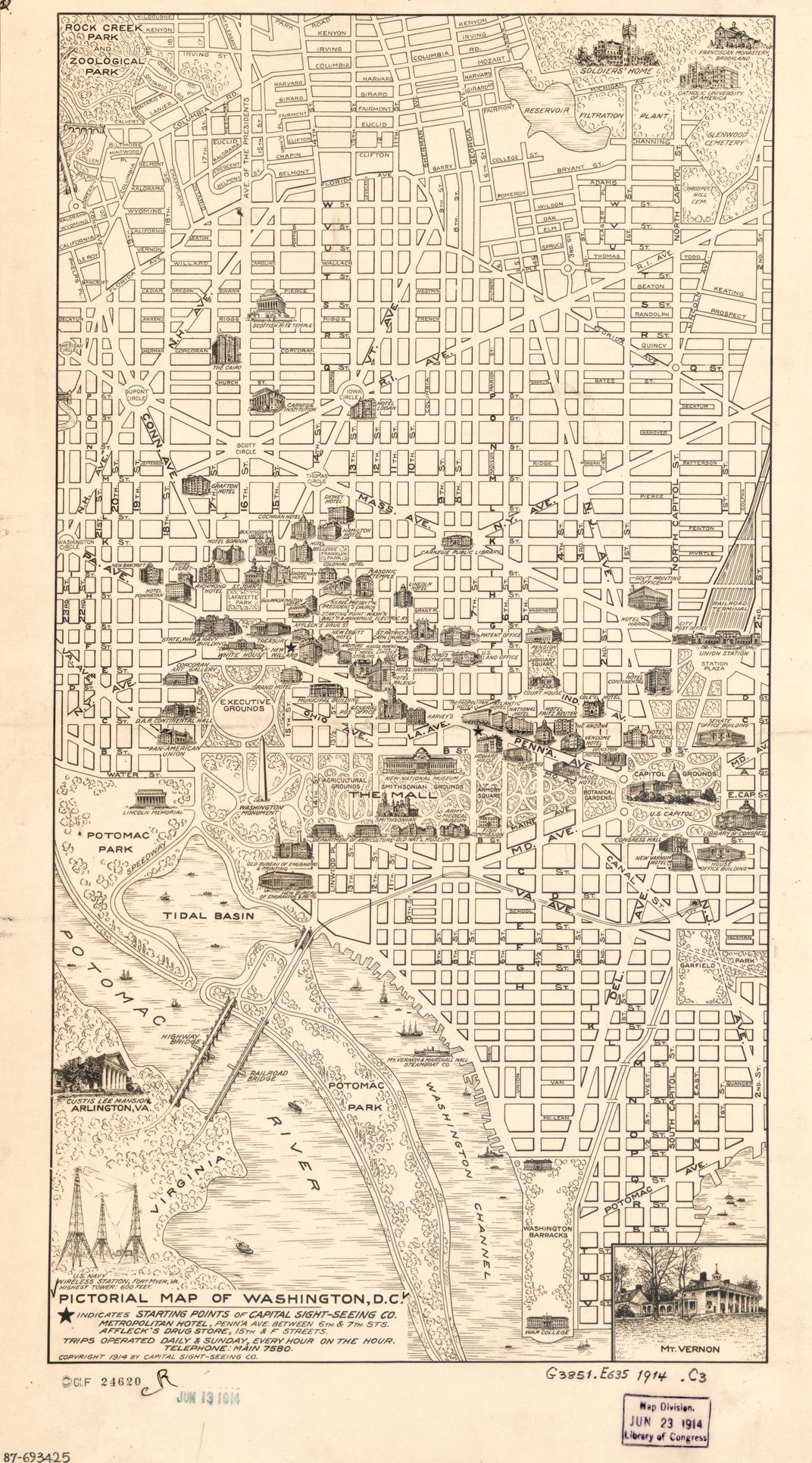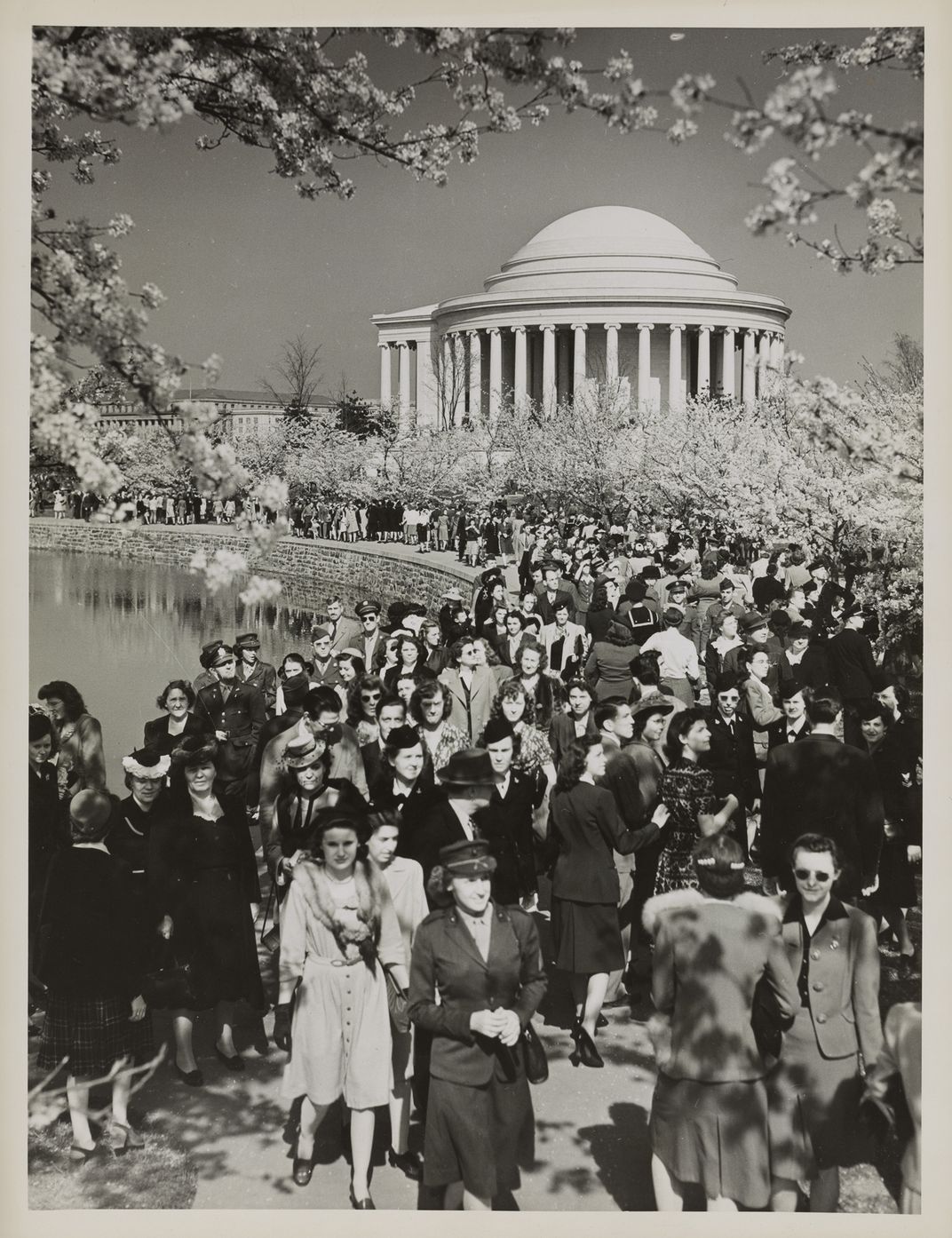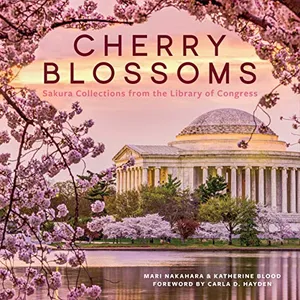Every spring, the 3,800 cherry trees along Washington, D.C.’s Tidal Basin burst into a symphony of pink-and-white blossoms. Because this picturesque period lasts, on average, just four to seven days, the spectacle is a much-anticipated annual event, with local horticulturalists and cherry blossom enthusiasts alike predicting the timing of peak bloom ahead of the National Park Service’s (NPS) official announcement.
This year, reports the NPS, peak bloom—when more than 70 percent of Yoshino cherry trees, the most common species in the area, open their buds—is projected to take place between April 2 and 5. Due to Covid-19 restrictions, visitors may only be able to see the blooms virtually, but as National Park Service spokesperson Mike Litterst tells Washingtonian’s Andrew Beaujon, officials are evaluating “what, if any, opportunities will be available to view the blossoms in person at the Tidal Basin.”
The floral explosion and accompanying National Cherry Blossom Festival draw more than a million visitors to the city each year. The festival commemorates the cherry trees’ 1912 arrival in D.C.; Tokyo’s mayor, Yukio Ozaki, gifted 3,020 cherry blossoms to the capital as a symbol of friendship between the United States and Japan. This year, the celebration—slated for March 20 to April 11—will include a mixture of in-person and online offerings. Visit the festival site for the latest updates and a full schedule of events.
In honor of peak bloom, Smithsonian magazine has compiled a list of ten fun facts highlighted in Cherry Blossoms: Sakura Collections From the Library of Congress, a 2020 offering from Smithsonian Books that invites readers to learn about the trees’ history through original artwork, artifacts and photographs.
Cherry Blossoms: Sakura Collections from the Library of Congress
A beautiful gift book commemorating the nation's most cherished springtime tradition, the National Cherry Blossom Festival, through original works of art from the Library of Congress collections.
1. The 1,200-year-old tradition has its roots in plum blossoms.
Beginning in the ninth century A.D., Japanese aristocrats often brought saplings and trees down from the mountains to grace their gardens. The practice was initially associated with plum blossoms, known as ume, but became linked almost exclusively with cherry blossoms during the Heian period (794 to 1185). Hanami flower-viewing celebrations featuring food, drink, poetry and music continued through the Meiji era (1868 to 1912) to modern times. These gatherings later influenced Washington D.C.’s own cherry blossom traditions.
/https://tf-cmsv2-smithsonianmag-media.s3.amazonaws.com/filer/53/94/53949b1a-2f4a-4a08-9caf-c92511e5fd2e/112_-_ppmsca-00501u_crop.jpg)
2. Cherry blossoms were historically reserved for the elite.
Before cherry blossom viewing became popular among all levels of society, the tradition was reserved only for the elite. Toyotomi Hideyoshi, a legendary 16th-century feudal warlord and samurai, sponsored some of Japan’s most lavish cherry blossom-viewing events. His 1594 celebration at Mount Yoshino included a poetry party, or nō play—a form of Japanese musical theater which dates back to 14th century—and a hanami party at Yoshimizy Jinja Shrine with 5,000 guests. Four years later, on March 15, 1598, Hideyoshi planted 700 cherry trees at the Kyoto Daigoji Temple and built hillside teahouses to accommodate his guests. He also commissioned three opulent kimonos for each of the more than 1,000 women in attendance to wear during a procession to the temple.
/https://tf-cmsv2-smithsonianmag-media.s3.amazonaws.com/filer/61/1a/611afab2-b0c0-4a06-a959-55513cbc318c/daigo_no_hanami-zu.jpg)
/https://tf-cmsv2-smithsonianmag-media.s3.amazonaws.com/filer/64/55/6455a219-8974-4719-9452-e2c818573513/107_-_ppmsca-01362u_crop.jpg)
3. Cherry blossoms’ fleeting blooming season has long been associated with the transitory nature of life.
During Japan’s Edo period (1603 to 1868), colorful ukiyo-e woodblock prints—pictures of the floating or sorrowful world—featured cherry blossoms to mark the beginning of spring. Because cherry blossoms have a short blooming period, they are said to represent life’s fleeting beauty. (In Japan, cherry blossoms have historically been associated with warriors, including samurai and kamikaze pilots.) This transitory nature becomes most evident when gusty spring winds end the blooming season with showers of drifting petals—an effect the Japanese call hanafubuki, or cherry blossom blizzard.
4. Before hosting cherry blossoms, Potomac Park was known as Potomac Flats.
The United States Army Corps of Engineers spent three decades transforming the low-lying (and malodorous) area known as Potomac Flats into Potomac Park. David Fairchild, a botanist with the U.S. Department of Agriculture, and Eliza Scidmore, the first woman to serve on the board of the National Geographic Society, promoted the site as an ideal place for a “field of cherries.” A 1911 photograph of the area, taken shortly before the trees were planted, shows the Tidal Basin’s empty shores next to a curving boulevard with an assortment of cars, horse-drawn carriages and even bicycles.
5. Cherry blossoms come in all shapes and sizes.
Cherry blossoms come in a variety of colors, including white, pink, yellow and green. In 1912, Tokyo sent 12 different cherry blossom species to Washington, D.C. While the majority were the classic white-pink Somei Yoshino, some were double-flowered and contained green blossoms called Gyoikō. Today, the trees around the Tidal Basin are limited to the Somei Yoshino and Kwan-Zan varieties.
6. Visitors can still see original cherry blossoms from 1912.
Thanks to dedicated year-round care from the National Park Service, 125 of the original trees gifted from Tokyo in 1912 have surpassed their average lifespan of 30 to 40 years and lived to be older than 100.
7. The Cherry Blossom Festival was canceled during World War II.
Days after the attack on Pearl Harbor in December 1941, vandals chopped down four cherry trees in a suspected act of retaliation. But while the cherry blossom festival was suspended during World War II, crowds were still able to visit the Tidal Basin to see the trees in full bloom. And after the festival was relaunched in 1948, it came to reaffirm the pre-war friendship shared by the United States and Japan.

8. The festival gives one lucky woman the opportunity of a lifetime.
Since 1939, more than 3,000 young women have participated in the Cherry Blossom Princess Program, a “cultural, educational, and professional development program for future women leaders.” The seven-day program provides multiple opportunities for “princesses” to meet with leaders in such industries as business, politics and the arts. The winner claims the ceremonial Mikimoto Pearl Crown, appears in the National Cherry Blossom Festival Parade and even travels to Japan as a young diplomat.
9. If you look between the trees, you may find a stone lantern.
In 1954, the Japanese government presented the American capital with a stone lantern commemorating the first treaty between the two countries. Visitors can spot the gift between the cherry trees along the basin. Each year, the Cherry Blossom Princesses perform a ceremonial lighting of the lantern.
10. Cherry blossoms can be found across the country.
Washington, D.C. isn’t the only American city with beautiful ornamental cherry blossoms. Tourists can find similarly lush trees in cities such as San Francisco, Philadelphia and New York City. Even Macon, Georgia, has some 300,000 trees that bloom every spring.

A Note to our Readers
Smithsonian magazine participates in affiliate link advertising programs. If you purchase an item through these links, we receive a commission.
:focal(300x171:301x172)/https://tf-cmsv2-smithsonianmag-media.s3.amazonaws.com/filer/ec/61/ec610c0a-671d-40e3-aba6-1059cf0e5131/cherry_blossoms_mobile.jpg)
:focal(904x361:905x362)/https://tf-cmsv2-smithsonianmag-media.s3.amazonaws.com/filer/20/a5/20a5653a-35c8-4824-ad4f-2454b336e408/longform_main_cherry.jpeg)
/https://tf-cmsv2-smithsonianmag-media.s3.amazonaws.com/accounts/headshot/37340836_1862108597212824_3071431907662102528_n.jpg)

/https://tf-cmsv2-smithsonianmag-media.s3.amazonaws.com/accounts/headshot/37340836_1862108597212824_3071431907662102528_n.jpg)